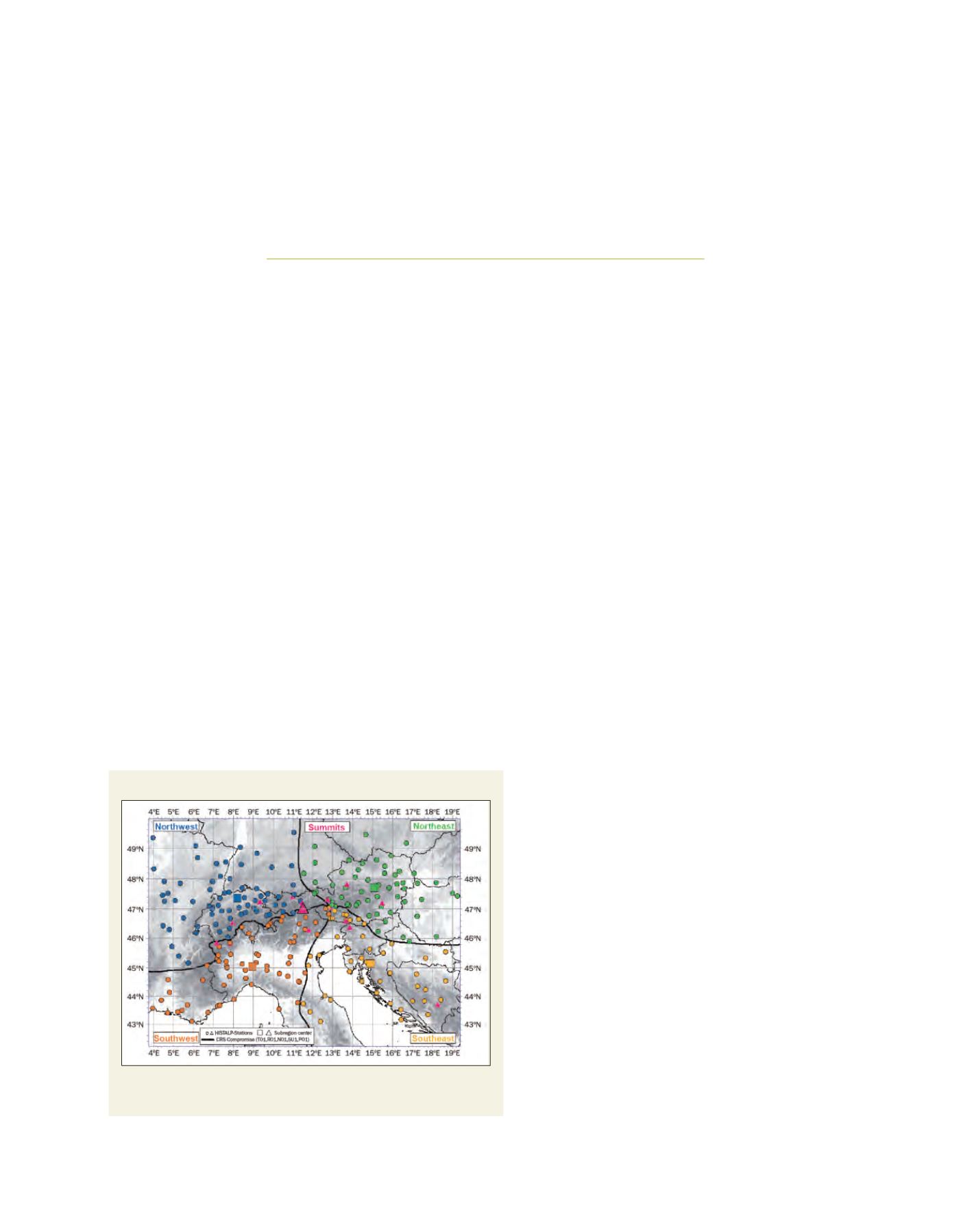

[
] 179
The importance of high quality regional
scientific information in coping
with global climate change
Ingeborg Auer, Reinhard Böhm and Wolfgang Schöner, Central Institute for Meteorology and Geodynamics, Austria
Z
AMG, the Austrian weather service, regards the produc-
tion, the quality control and the analysis of high-quality
climate data as one of its core duties. This includes the
maintenance of a meteorological network adequately vast to
cover the complex terrain of the country. However, national
borders do not usually correspond precisely with climate
domains. In the late 1990s ZAMG began formal and informal
cooperation with the national met-services and other data
providers of the greater alpine region (GAR) to create and main-
tain the common climate database HISTALP.
1
The intention was to aim for the following principles:
• Long-term – fully exploiting the potential of systematically
measured data
• Dense – network density adequate with respect to the spatial
coherence of the given climate element
• Quality improved – outliers removed, gaps filled
• Homogenized – earlier sections adjusted to the recent state of
the measuring site
• Multiple – covering more than one climate element
• User friendly – well described and kept in different
modes for different applications, in scientific research
as well as for technical, educational applications and
for providing quality information about climate vari-
ability and change for the general public.
So far HISTALP has concentrated on longer monthly
series (some 30 of them starting in 1800 and earlier)
allowing us to better solve the homogeneity problem
– for which severe problems still exist with respect to
daily or sub-daily series. However, the first steps towards
the inclusion of daily series are underway. HISTALP
data are kept in three modes: station-mode (original
and homogenized for all seven climate elements); grid-
mode-1 (anomaly series of temperature, precipitation
and air pressure at a grid size of 1 degree latitude-
longitude, respectively); and CRSM-mode (coarse
resolution sub-regional means – anomaly series of all
seven climate elements as spatial means of five principal
sub-regions of the GAR, objectively detected via PCA).
The GAR is climatologically characterized by a
complex terrain of three different large scale climate
regimes: Atlantic-maritime influences from the west
versus continental climate from the east, as well as the
Mediterranean climate with its annual cycle of subtropi-
cal highs further north in the summer and further south
in the winter. These three horizontal regimes are over-
lain by the vertical gradients of all climate parameters.
This makes the region interesting for scientific study;
specifically the study of a situation where nature and
human societies exist in a sensitive mountain region.
The area serves as a great example of the potential
practical applications that can be derived from regional
climate change research.
A few examples serve to illustrate some of the leading
climate change and variability patterns, as well as demon-
strate their scientific and applicative relevance. Firstly,
the GAR has warmed twice as much as the northern
hemisphere land surface since the late 19th century.
2
The
main driving force behind this additional 1°C warming
above the global background is a northward shift of the
subtropical high pressure system. Put simply, this has
produced more incoming radiation. This synoptic feature
O
bserving
, P
redicting
and
P
rojecting
C
limate
C
onditions
The greater alpine region in south-central Europe
Showing its five principal horizontal and vertical coarse resolution sub-
regions and the network of HISTALP stations for long climate time series
Source:
www.zamg.ac.at/histalp















